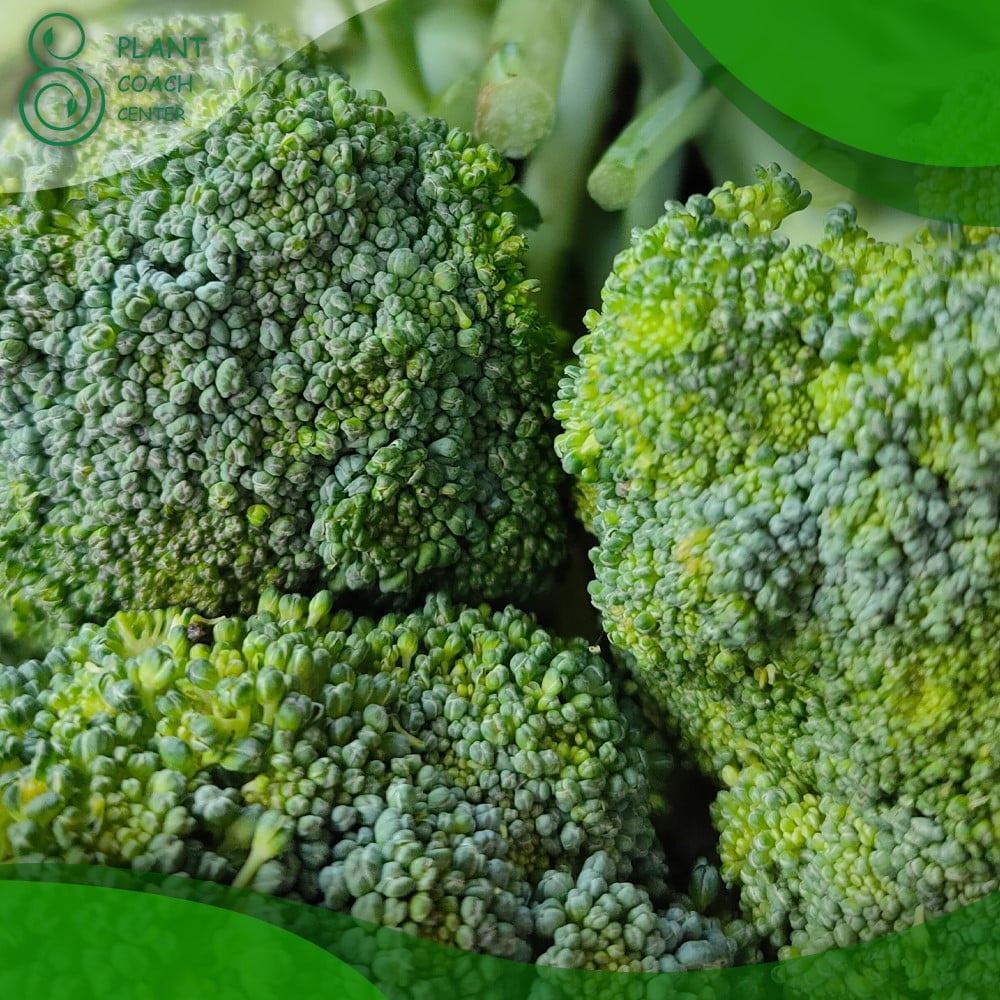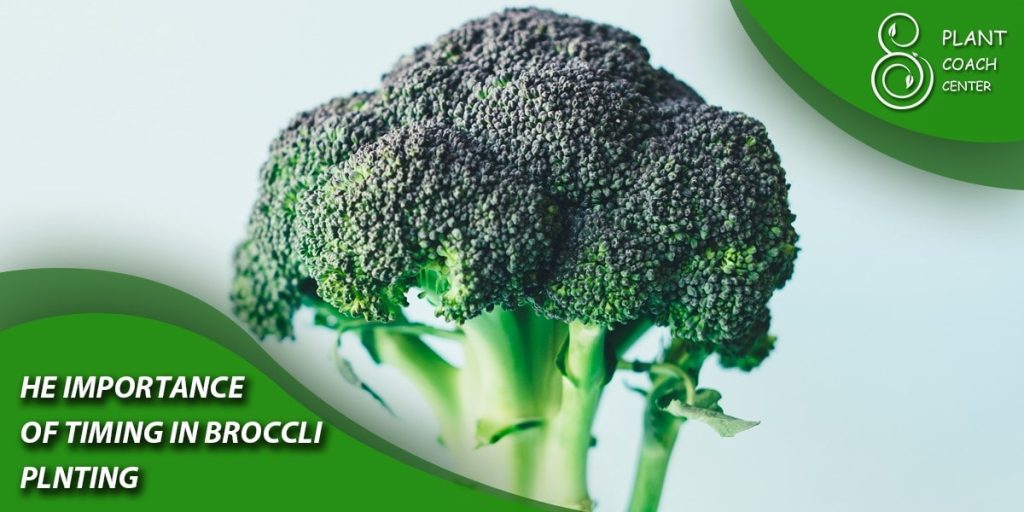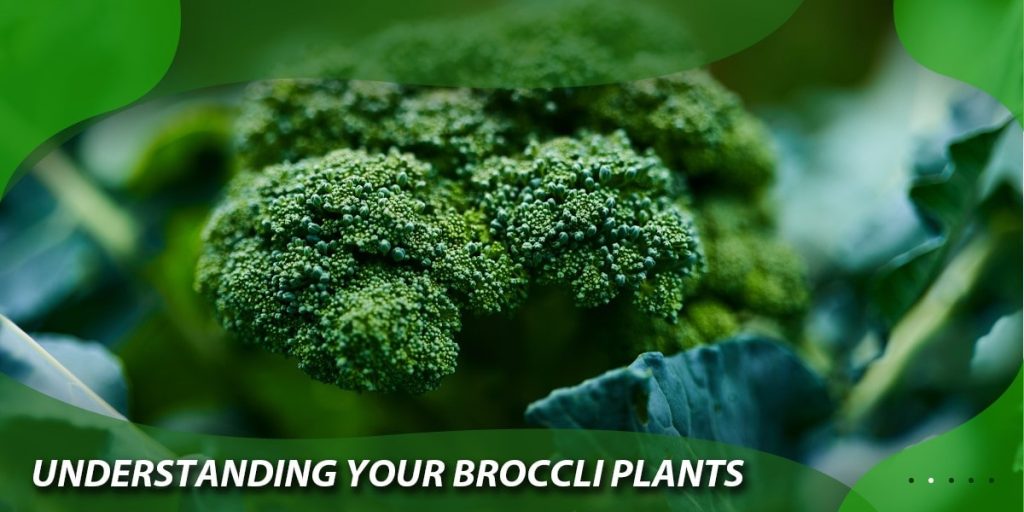When to Plant Broccoli
Broccoli, a popular and nutritious vegetable, is a joy to grow for many gardeners. The key to a successful broccoli harvest lies in understanding when to plant broccoli and its seeds. This comprehensive guide, brought to you by PlantCoachCenter.com, will delve deep into the art and science of broccoli planting.
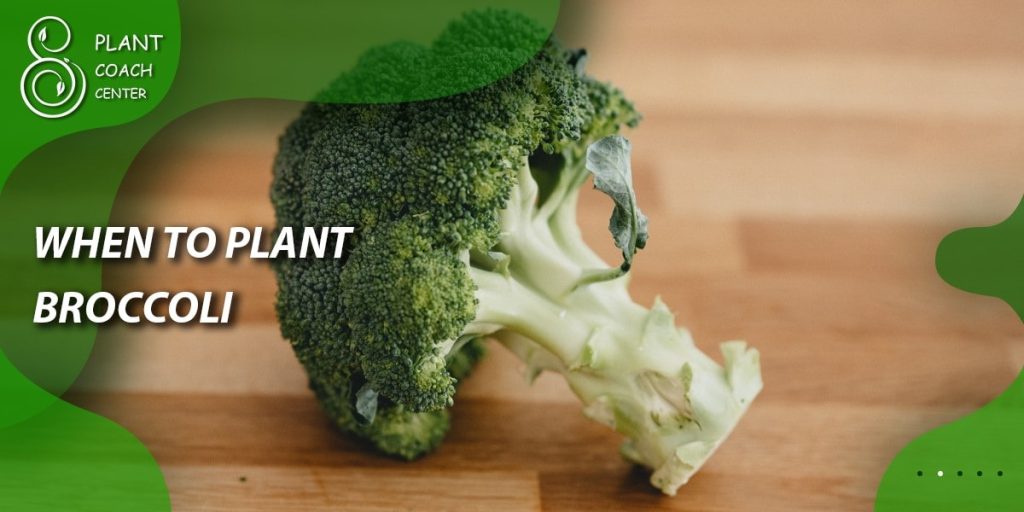
Understanding Broccoli: A Brief Overview
A Glimpse into Broccoli’s History
Native to the Mediterranean and Asia Minor, broccoli has been a part of human diets for over 2000 years. The vegetable we know today was refined in Europe and brought to America by immigrants, where it gained popularity in the 1920s.
The Nutritional Powerhouse: Health Benefits of Broccoli
Broccoli is a nutritional powerhouse packed with vitamins A, C, and K, fiber, and a host of other nutrients. It’s known for its potential to prevent various diseases, making it a superfood you’d want to have in your home garden.
The Importance of Timing in Broccoli Planting
Why Timing Matters
Broccoli is a cool-season crop, which means it grows best when the average daily temperature is between 60°F and 70°F. Planting at the right time ensures a healthy harvest and avoids problems such as bolting, where the plant goes into flower production mode rather than developing a large edible head.
Climate Considerations: Crucial Factors That Influence When to Plant Broccoli
Your local climate plays a significant role in determining the best planting times. Cooler, temperate regions can accommodate spring and fall plantings, while warmer areas may see better success with a fall planting.
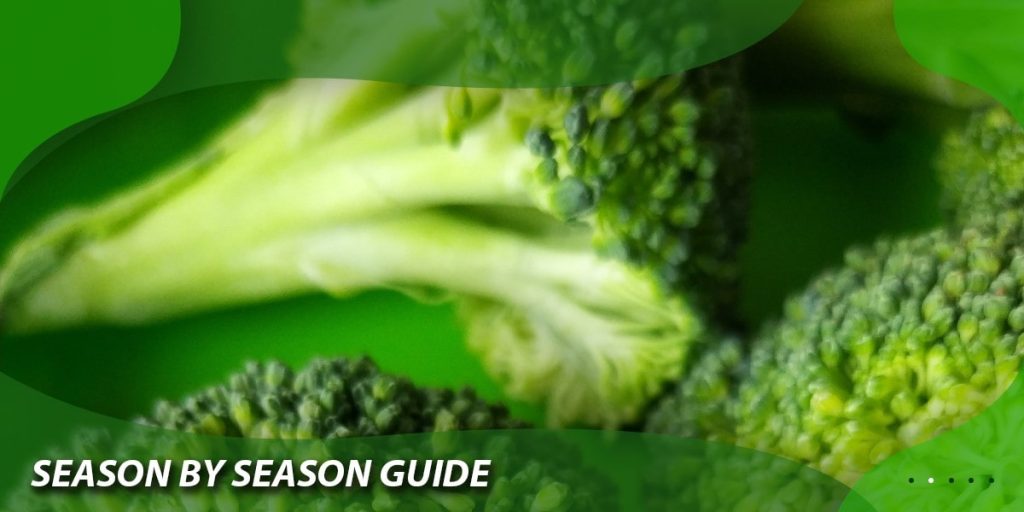
When to Plant Broccoli: A Season by Season Guide
Spring Planting
Spring planting can start as soon as the last winter frost has passed. Broccoli planted in early spring will mature by summer.
Summer Planting
For a fall harvest, begin planting broccoli in mid to late summer. This way, the crop will mature as temperatures drop in autumn, enhancing its flavor.
Fall Planting
In mild winter areas, planting in fall for a winter harvest is possible. The cool weather allows the plant to mature slowly, resulting in sweet, tender heads.
Winter Planting: Is it Possible?
In areas with mild winters, broccoli can be planted for a late winter or early spring harvest. In colder regions, winter planting is not recommended, as freezing temperatures can kill the plant.
When to Plant Broccoli Seeds: A Detailed Guide
Indoor Seeding: Early Start for Spring Planting
Starting broccoli seeds indoors 6-8 weeks before the last expected spring frost gives the plants a head start. Transplant seedlings outdoors once the risk of frost has passed.
Outdoor Seeding: The Direct Sowing Method
Direct seeding can be done 2-3 weeks before the last spring frost date. For a fall harvest, sow seeds outdoors 85-100 days before the first fall frost.

Recognizing and Addressing Broccoli Plant Problems
Common Pests and Diseases
Common pests include cabbage worms, aphids, and flea beetles. Diseases like clubroot, black rot, and downy mildew can also affect broccoli. Regular inspection, proper spacing, and crop rotation can help prevent these problems.
Nutrient Deficiencies
Yellowing leaves can indicate a nitrogen deficiency, while purple-tinged leaves suggest a phosphorus deficiency. Regular soil tests can help you identify and address nutrient imbalances.
Overcoming Weather-Related Challenges
Extreme heat can cause broccoli to bolt, while frost can damage young plants. Using row covers or shade cloth can help protect broccoli from weather extremes.
Care Tips for Healthy Broccoli Growth
The Right Soil for Broccoli
Broccoli prefers well-draining soil with a pH between 6.0 and 7.0. Enriching the soil with compost or a balanced fertilizer can promote healthy growth.
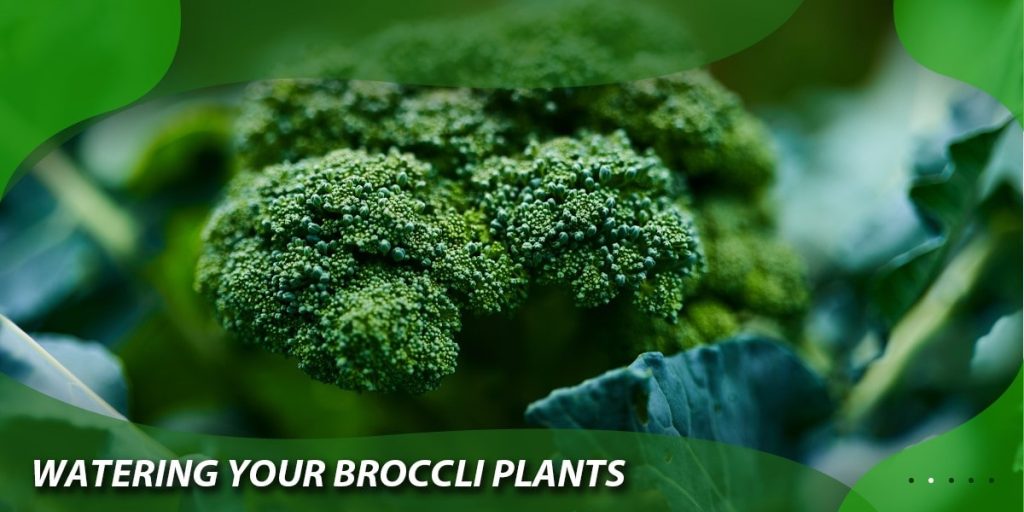
Watering Your Broccoli Plants
Broccoli requires consistent watering to develop large, firm heads. Aim for 1-1.5 inches of water per week, adjusting as necessary based on weather conditions.
The Role of Sunlight and Shade
Broccoli needs at least 6 hours of sunlight each day. Partial shade can be beneficial in warmer climates to prevent bolting.
Pruning and Harvesting Your Broccoli
Remove lower leaves to encourage central head development. Harvest when the buds of the head are firm and tight, cutting about 5-6 inches below the head.
Understanding Broccoli Varieties: Choose the Best for Your Garden
When deciding to grow broccoli, it’s essential to understand the different varieties available and choose the one best suited to your local climate and personal preferences. The following section will guide you through some popular broccoli varieties and their unique characteristics.
Calabrese Broccoli
Originating from Italy, Calabrese broccoli is what most people picture when they think of broccoli. It’s known for its large, green heads and abundant side shoots. This variety is ideal for cooler climates and has a relatively quick maturity time of 50-60 days.
Romanesco Broccoli
Romanesco stands out with its stunning, fractal-shaped heads that are a vibrant chartreuse color. This variety prefers cooler weather and has a slightly nuttier flavor compared to other types. It’s a great conversation starter and adds visual interest to any garden.
Purple Sprouting Broccoli
This variety is a favorite among gardeners for its striking purple heads and high productivity level. Purple Sprouting Broccoli is particularly hardy, making it a good choice for colder regions. It matures slowly, providing a late winter to early spring harvest when few other crops are ready.
Chinese Broccoli (Gai Lan)
Chinese broccoli, also known as Gai Lan, is a different species from common broccoli. It’s characterized by its glossy, blue-green leaves and thick stems with small flower heads. This variety grows well in both cool and somewhat warmer conditions and has a slightly bitter, yet delicious flavor.
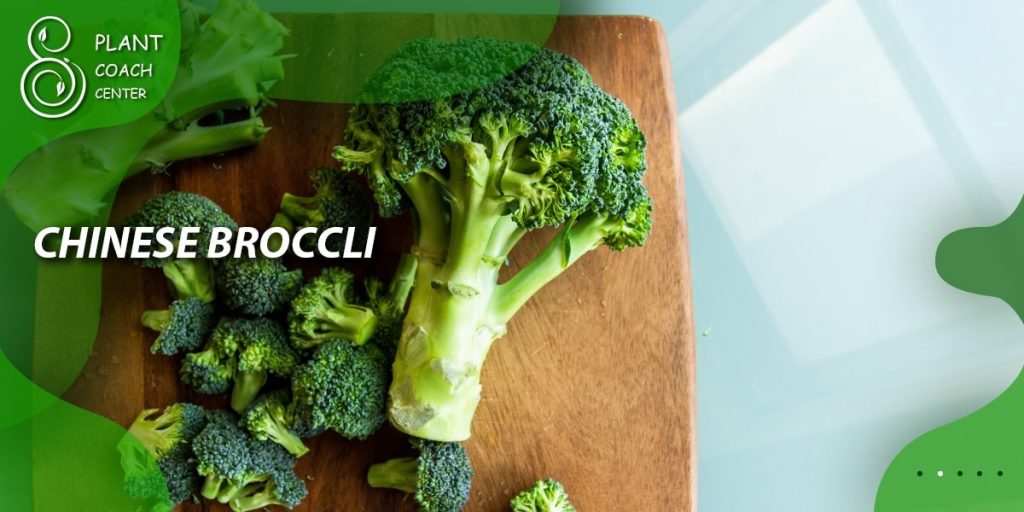
Broccolini
Broccolini is a hybrid vegetable, a cross between broccoli and Chinese broccoli. It has long, thin stalks topped with small, tender florets. While it’s more sensitive to extreme weather conditions, it’s prized for its sweet, delicate taste and versatility in the kitchen.
Choosing the right variety of broccoli can enhance your gardening experience and your culinary adventures. Whether you prefer the classic Calabrese, the visually intriguing Romanesco, or the hardy Purple Sprouting Broccoli, understanding the different types ensures you can enjoy a bountiful and tasty harvest. Keep in mind the unique requirements and characteristics of each variety when planning your planting schedule, and you’ll be well on your way to a successful broccoli-growing season.
Conclusion
Growing broccoli can be a rewarding experience, offering not only a tasty and nutritious product but also the satisfaction of nurturing a plant from seed to harvest. By understanding when to plant broccoli and its seeds, you’re on your way to becoming a successful broccoli farmer.
When is the best time to plant broccoli?
The best time to plant broccoli is in early spring after the last frost or in mid to late summer for a fall harvest. However, the timing can vary based on your local climate.
How long does it take for broccoli seeds to germinate?
Broccoli seeds typically germinate in 5-10 days in optimal conditions, with a soil temperature between 45°F and 85°F. The ideal temperature for rapid germination is about 77°F.
What are some common problems when growing broccoli and how can they be addressed?
Common problems include pests like cabbage worms and aphids, diseases such as clubroot and black rot, and nutrient deficiencies.
How can I ensure a healthy growth for my broccoli plants?
How can I ensure a healthy growth for my broccoli plants?
Can I plant broccoli in the winter?
If you live in a region with mild winters, you can plant broccoli for a late winter or early spring harvest. In colder regions, winter planting is not recommended.
When should I harvest my broccoli?
Harvest broccoli when the buds of the head are firm and tight, before the buds start to yellow or flower. Cut the stalk about 5-6 inches below the head.


